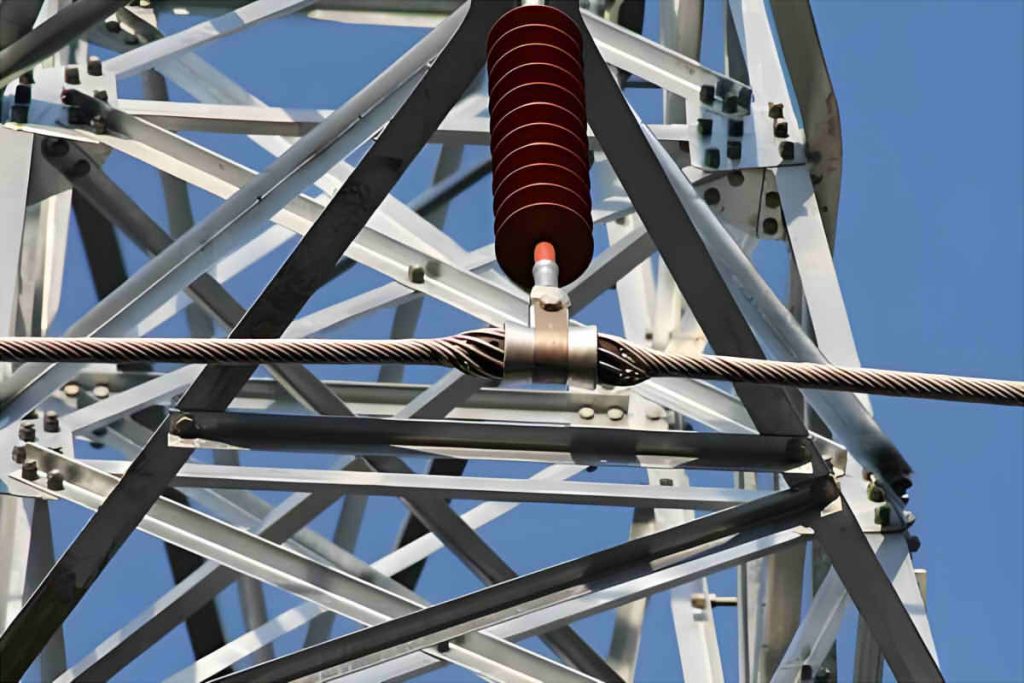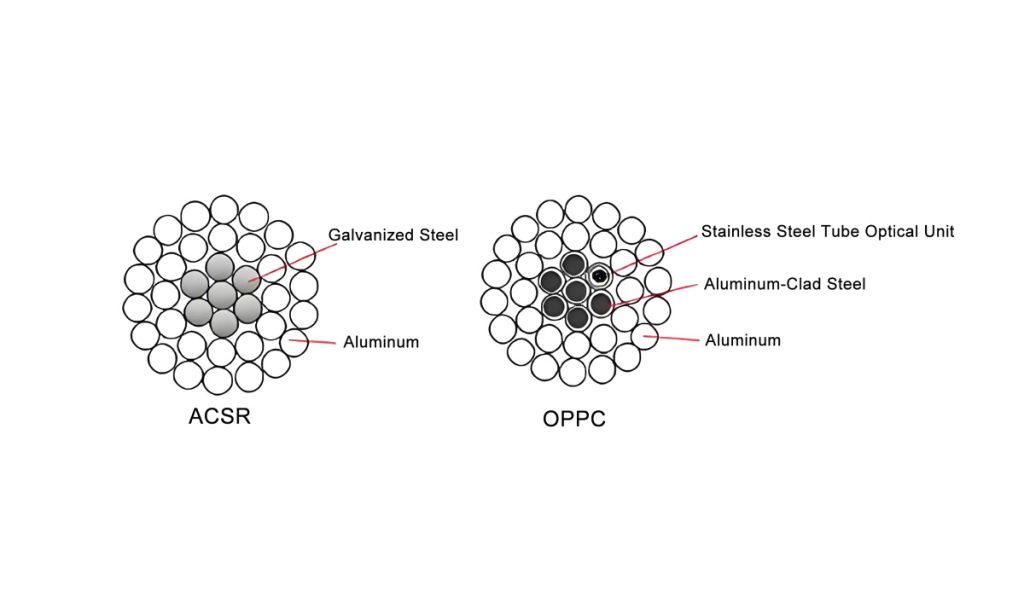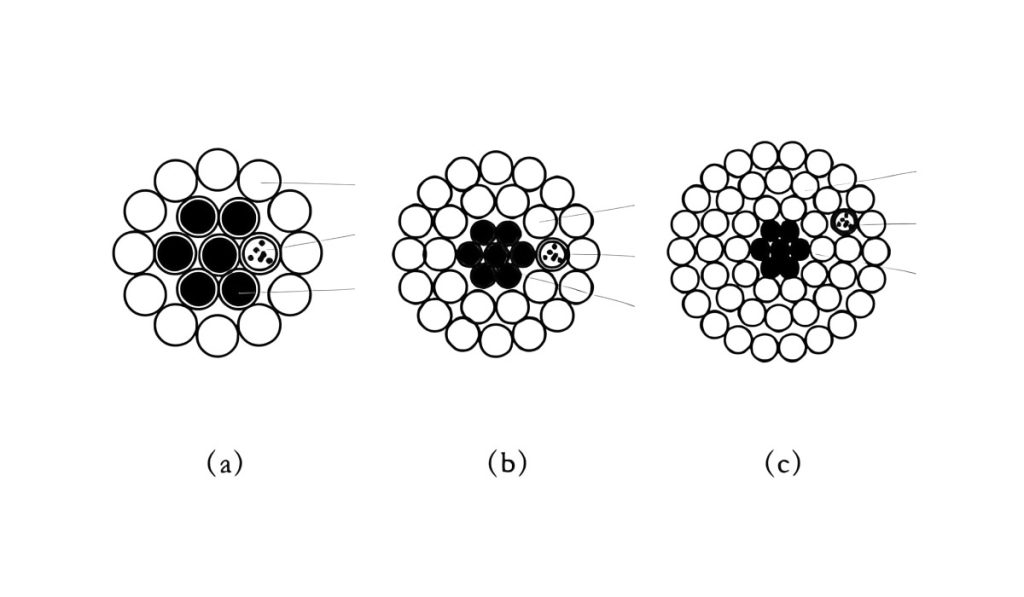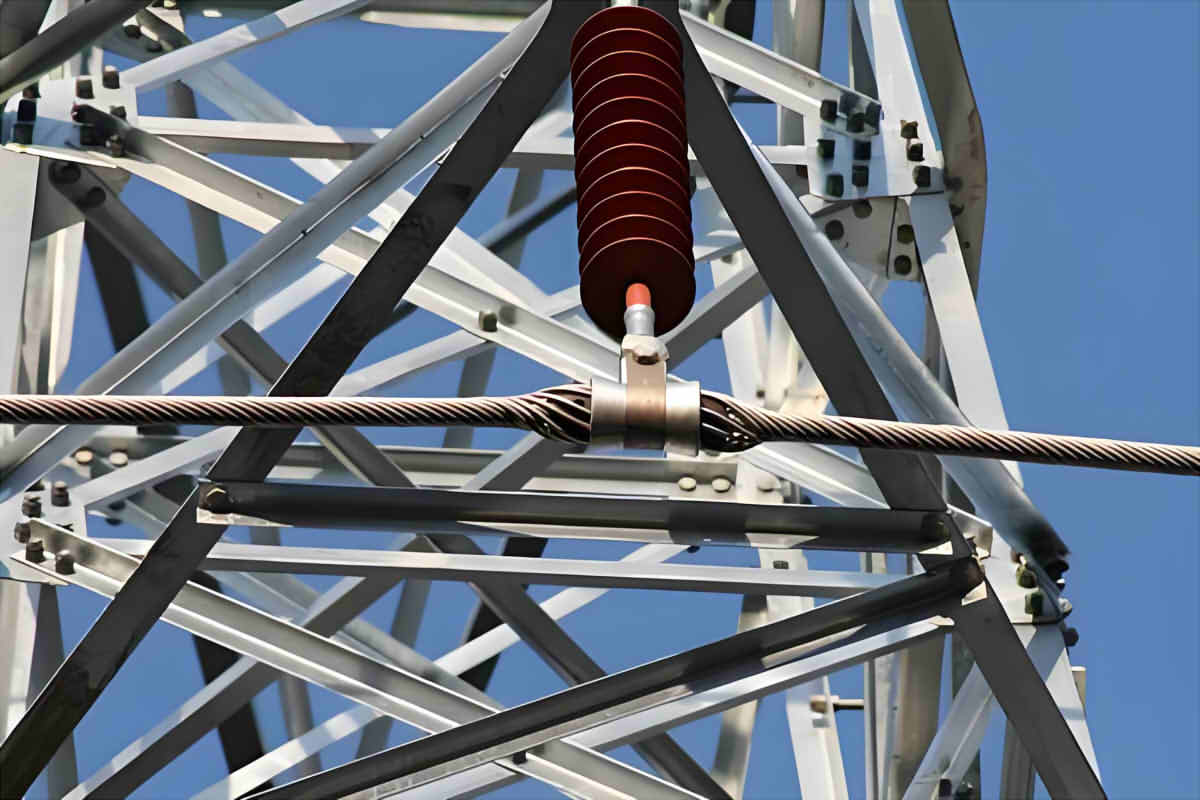IOPPC is a new type of insulated optical fiber composite phase, which was developed from OPPC (Optical Phase Conductor).

Table of Contents
On overhead electric power transmission lines, The most mature and commonly used technology to build fiber optic communication transmission channels is composite fiber with OPGW ground wire. It is installed suspended at the top of the towers, replacing one or two overhead protective ground cables.
The next option is to use ADSS all-dielectric self-supporting fiber optic cable. It is installed suspended on the towers in a space with adequate potential below the conductors. When the installation conditions of neither of the two are met, OPPC composite optical phase conductor can be used.
OPPC is an aerial phase conductor that integrates optical fiber, usually one of the three phases of the driver. And it is installed at the drivers position on the tower crossbar. It carries the direct current that transmits electrical energy and must maintain the insulation resistance corresponding to the transmission voltage with the tower.. Because the OPPC is a charged body, When splicing the fiber optic cable, a special insulated optical splice box installed at a suitable position on the tower should be used..
What is IOPPC?
On the distribution lines 10 kV, An overhead ground wire is generally not available., unless configurations are added to the towers to install OPGW. Besides, due to the low height of the towers, it is difficult to find ADSS suspension points that simultaneously meet the spatial potential and the safety distance from the ground along the entire line. Besides, due to the numerous and complex installations on the distribution line towers, It is often difficult to find a safe place to install the insulated junction boxes of loaded conventional OPPCs. Therefore, mature conventional technologies such as OPGW, ADSS y OPPC are not completely suitable for distribution lines. 10 kV.
In this context, Guangdong Power Grid company has led the development of IOPPC isolated fiber optic composite phase technology (Isolated Optical Phase Conductor). After ten years of development, has become a comprehensive technology including IOPPC body, optical energy separation, support accessories and construction methods. This technology has already been implemented and validated in distribution lines of 10 kV, getting good results.
The IOPPC uses high-performance insulation materials for the optical drive, which becomes a complete insulator after separating from the composite phase. Combines innovative accessories for in-line optical and electrical separation, making it easy to separate in any position. This not only overcomes the deficiencies of conventional OPPC in distribution lines, but also expands the scope of application of fiber optic composite phases.
Conventional OPPC technology
Overhead conductors are usually of type ACSR (Steel Reinforced Aluminum Conductor), and the structure of the OPPC (Optical Phase Conductor, Optical Phase Conductor) conventional with fiber optic unit in stainless steel tube is very similar. Taking the standard stranded cable structure as an example “1×37” shown in the following figure, ACSR and OPPC braided structures from inside to outside are both “1+6+12+18”. Of these: the part “1+6” is the support component, being galvanized steel wire in the ACSR and steel wire with aluminum coating and optical unit in the OPPC; the part “12+18” is the driving component, with conductive aluminum wires in both ACSR and OPPC with a conductivity ≥61% IACS.

Since the OPPC is a charged body, The junction box used must maintain an insulation resistance corresponding to the voltage level with the tower and ensure a safety distance from the ground.. Especially since the fiber optic unit in stainless steel tube is also loaded, at the line terminal a reliable optical-electrical separation must be carried out. Besides, because no excess wire is allowed at the OPPC splices, junction box splicing operations should be performed at the top of the tower.
The Junction box of the OPPC must be installed on a support tower, and during the splicing it is necessary to build a working platform at height on the tower. OPPC junction box structure is quite complex, which implies high construction and maintenance costs and requirements, so it is difficult to promote its application in distribution lines of 10 kV.
IOPPC structure and parameters
The IOPPC is an overhead conductor containing an isolated optical unit, with multiple functions such as power transmission and fiber optic communication (including sensing), usually one phase in a three phase system.
Given its character as an aerial conductor, The IOPPC corresponds to the commonly used overhead conductors.

(a) Two-layer braiding structure, mainly corresponding to conventional ACSR70/40 conductors, 95/55.
(b) Three-layer braiding structure, mainly corresponding to conventional ACSR120/20 conductors, 150/35, 185/45, 140/30, 300/40, 300/70.
(c) Four-layer braiding structure, mainly corresponding to conventional ACSR400/35 conductors.
The main difference between IOPPC and conventional OPPC is the position of the optical drive in the cable cross section: regardless of the number of layers of the braided structure, the isolated optical unit is always located in the outer subsequent layer. This is mainly to meet the needs of online optical-electrical separation.
Resume
Due to the particularities of the distribution lines, Fiber optic composite cable technologies for mature transmission lines, such as composite ground cable with optical fiber (OPGW), the cable fully dielectric self-supporting optical fiber (ADSS) and the phase conductor composed of optical fiber (OPPC), are not completely suitable for distribution lines. IOPPC technology, developed from conventional OPPC technology, uses high-performance insulating material optical drives and has become a comprehensive technology including the IOPPC body, optical-electrical separation, support accessories and construction methods. This technology has been built and validated in distribution lines of 10 kV, getting good results.
In November 2022, the issuance of technical regulations “Q/CSG 1204158-2022 IOPPC” by Southern Power Grid company marked the beginning of the practical application and promotion of IOPPC technology. Until today, IOPPC technology continues to be continually developed and refined.

